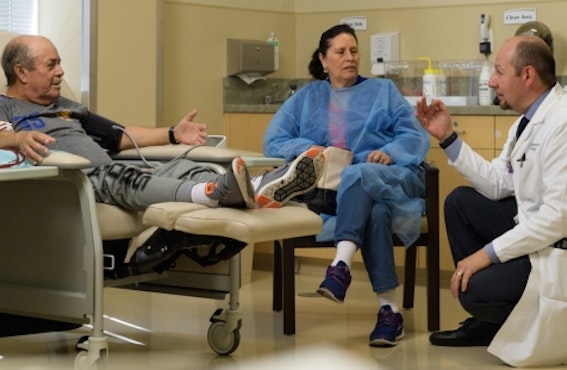
A Sacramento-based nephrologist is changing the way patients think of dialysis.
Join the conversation with Jose Morfin, M.D.
Listen on Google Podcasts | Listen on iTunes
When Satellite Healthcare started developing optimal transitions™, the focus was on creating a game changing educational program for dialysis patients.
It also has proven it can be a game-changer for nephrologists, including lead nephrologist Jose Morfin, M.D., a leading voice in spreading the word about optimal transitions™.
The need for OT and education
“Patients need to make important decisions and there is a big need to promote education,” Dr. Morphin said.
About half of patients are starting dialysis directly from a hospital setting, he explained. Immediate access is needed and he described the route to in-center dialysis treatment as “like a conveyor belt.”
There’s virtually no discussion and little room for patient education on options, although it’s clear members of the nephrology community would choose a different modality for themselves.
Optimal transitions™ seeks to change outcomes by giving patients the education they need about their health and their choices for treatment.
The biggest opportunity is with patients in the first 90 days of care, Dr. Morfin said. Many of the patients coming in are high risk. Others are doing in-center dialysis and are looking for a change. Still others are facing a change because of medical issues with their current modality.
“There is always fear at the decision point,” he said. But with education, patients can feel comfortable with their choices.
Introducing the CREW
In the course of the four-week optimal transitions™ program, patients receive dialysis five days a week in the center setting, but using the home hemodialysis machine.
A Satellite “CREW” – nurses, technicians, social workers, dieticians and the medical director – works with the patient to understand their lifestyle and their goals. The patient’s family is involved in developing a treatment plan.
Week 1: The first week is familiarization and the second is devoted to education and evaluation.
Week 3: The third week involves patient training, home setup and any surgery needed for port access.
Week 4: The final week is focused on making the transition.
Benefits of home
While there are a number of medical and lifestyle issues that can put home treatment out of reach of some patients, Dr. Morfin estimates that 40 percent would benefit from home therapies – peritoneal dialysis, home hemodialysis and nocturnal home hemodialysis dialysis.
He lists the benefits of home therapies, from the medical advantages of a slower, gentler dialysis to the lifestyle benefits of a patient regaining control of his or her daytime hours.
That 40 percent is a high bar. Today, about 20 percent of Satellite Healthcare patients are involved in home treatment. That’s twice the national average of about 10 percent, but still only halfway to the target.
At Satellite Healthcare, in-center care remains the most common modality.
In Dr. Morfin’s Sacramento center, 24 stations are in operation Monday through Saturday with overnight shifts Mondays, Wednesdays and Fridays. Four stations are set aside for the optimal transitions™ program.
“Dialysis keeps patients alive but can we get them to live and thrive?” he asks.
Through optimal transitions™, Dr. Morfin is moving toward answering that question in a positive way.
Join the conversation with Jose Morfin, M.D.
Listen on Google Podcasts | Listen on iTunes
About Dr. Jose Morfin
Jose Morfin, M.D., is a Sacramento area nephrologist with a University of California pedigree. He received his undergraduate degree at UC Davis and his M.D. from the David Geffen Medical School at UCLA. After doing his residency at UC San Francisco, he accepted a fellowship in nephrology at the UC Davis Medical Center. He is on faculty at UC Davis and is a practicing nephrologist with the UC Davis Medical Group. Today, he is medical director of a Satellite Healthcare Sacramento